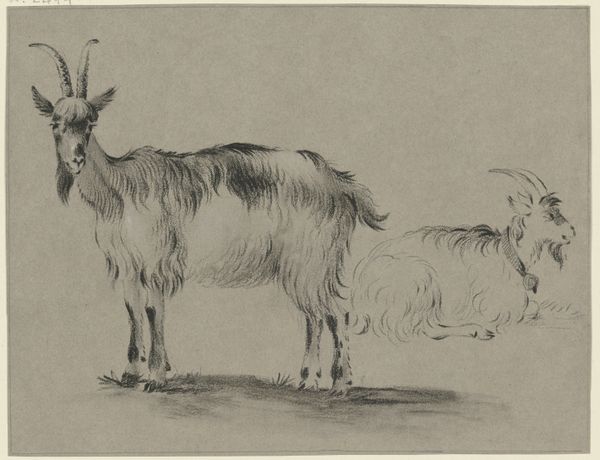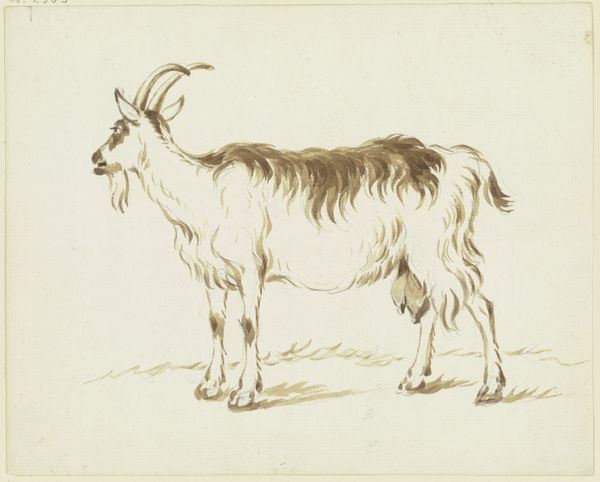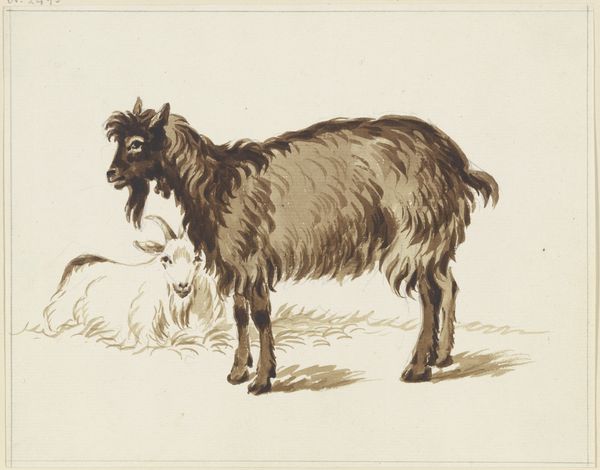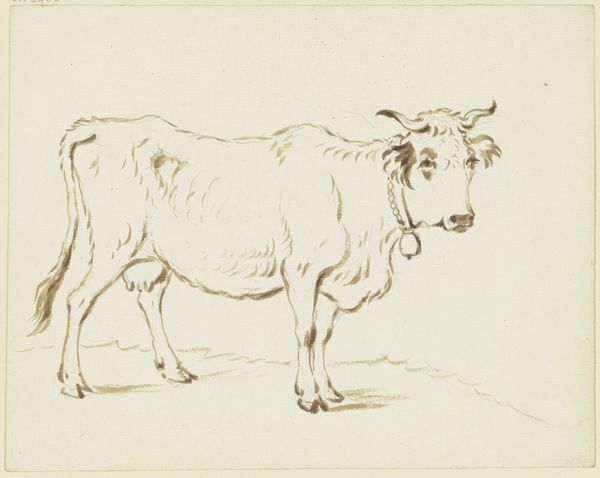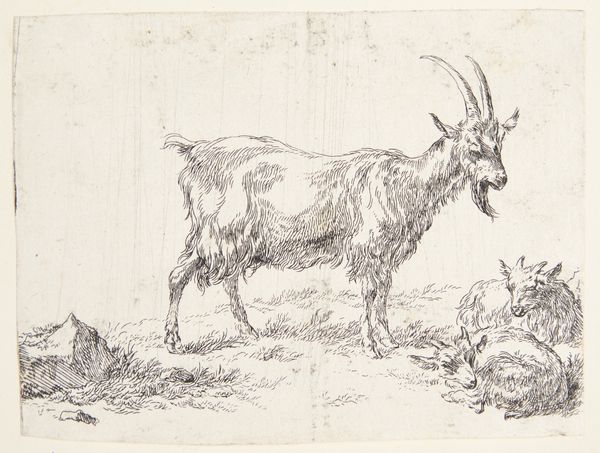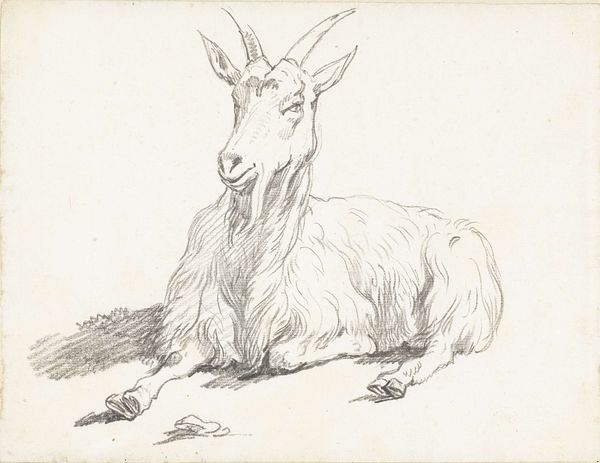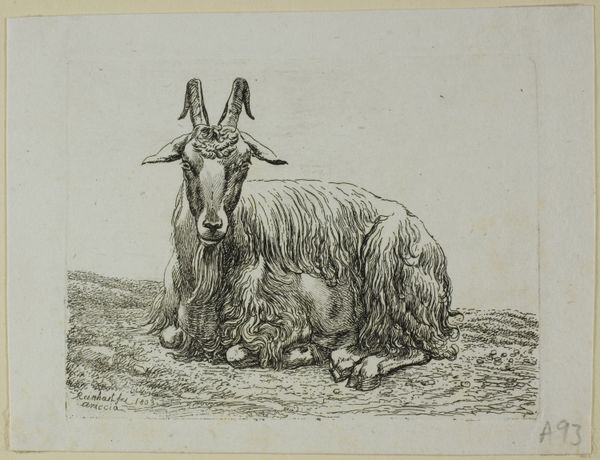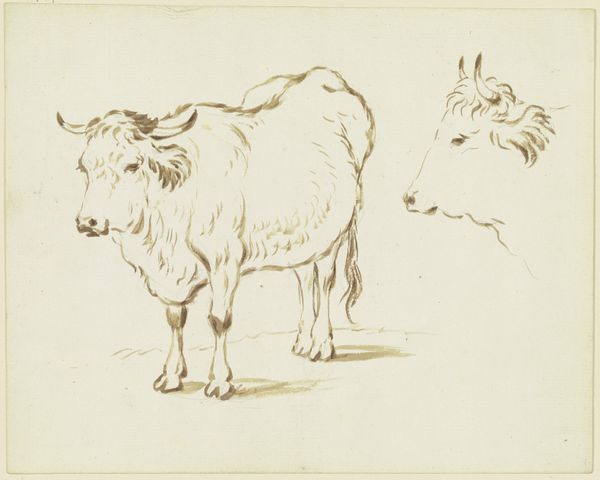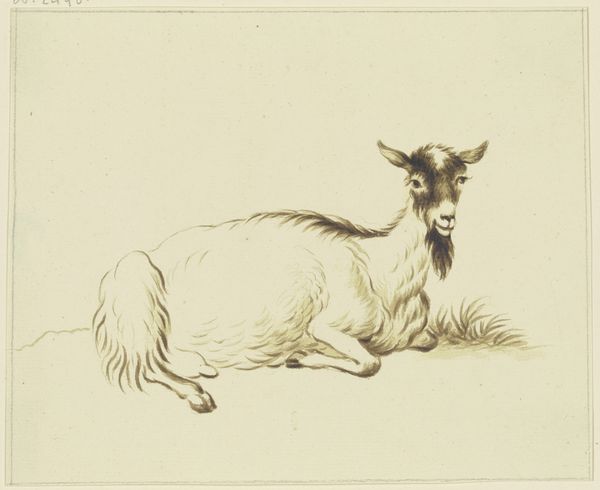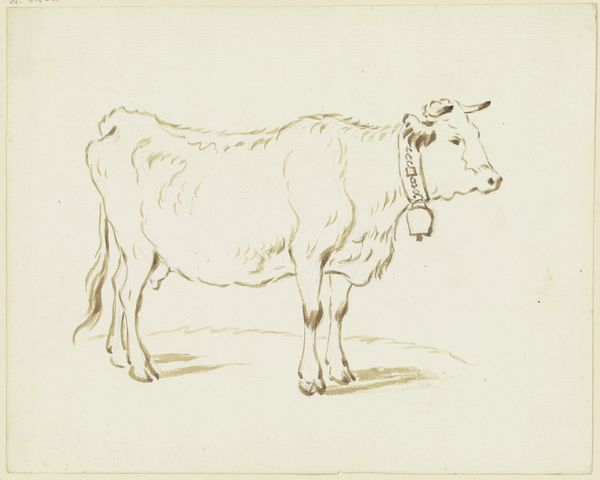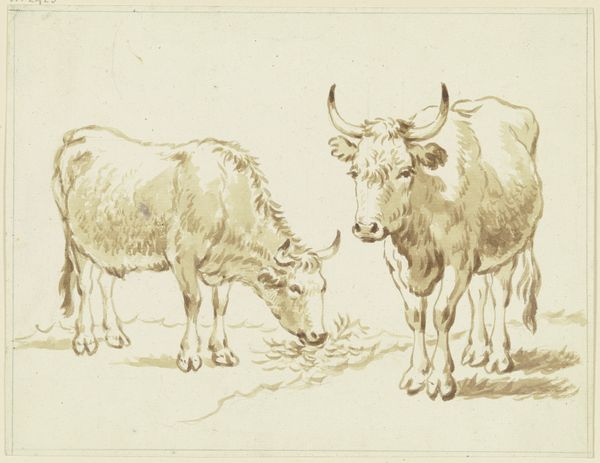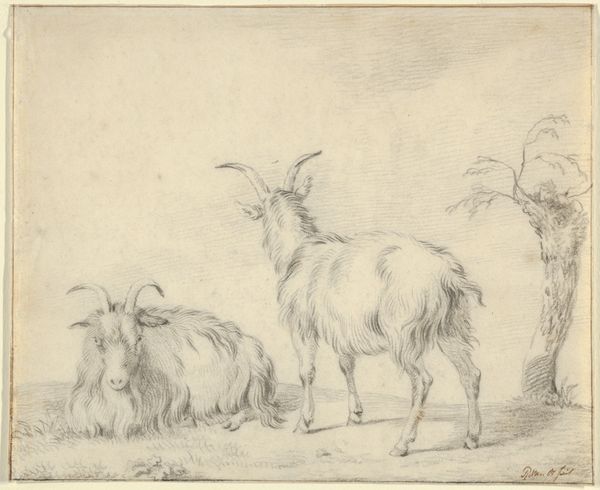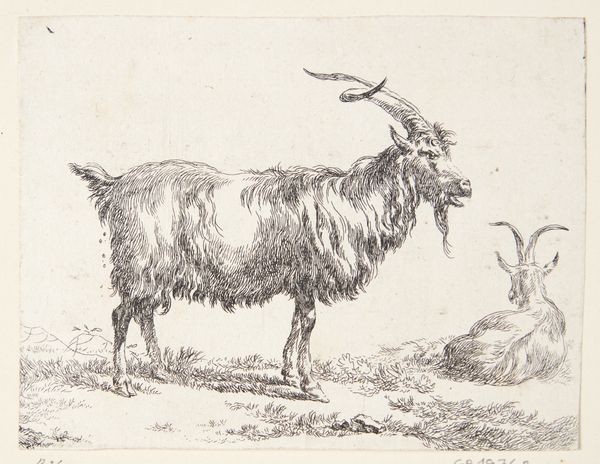
Zwei Ziegen, die stehende nach links, die liegende nach rechts
0:00
0:00
drawing, ink, indian-ink, graphite
#
drawing
#
light pencil work
#
pencil sketch
#
personal sketchbook
#
ink
#
german
#
pencil drawing
#
ink drawing experimentation
#
indian-ink
#
pen-ink sketch
#
botanical drawing
#
15_18th-century
#
graphite
#
sketchbook drawing
#
pencil work
#
watercolour illustration
Copyright: Public Domain
Curator: Ah, a charming piece from the Städel Museum collection – a drawing attributed to Friedrich Wilhelm Hirt, titled "Zwei Ziegen, die stehende nach links, die liegende nach rechts" rendered in ink, graphite, and potentially watercolor. Editor: My immediate impression is simplicity itself; a study in light and form captured with such elegant economy. There’s a tenderness in how the artist depicts these two goats. Curator: It’s tempting to delve into the artist’s hand, isn’t it? You see the layering, the materiality of the ink creating varied textures – look how he builds the coat of the standing goat, with short, quick strokes! One might explore the cost of these materials to a working artist at that time and to whom they may have had access. Editor: Absolutely, and I wonder about the societal function of depicting these animals. Were these commissioned farm portraits? A symbolic representation of pastoral life during an era of emerging industrialization in Germany? I am curious how the socio-economic value placed on livestock influenced this imagery. Curator: Indeed! And note how he's chosen his media. The Indian ink allowed him this layered texture and ability to produce tonal range with one pigment. The paper, too, speaks to production methods of the time. Its fibers tell their own story. This might indicate more informal work, rather than academic. Editor: It speaks volumes, yes! One could even look at this in context to Land Art happening in the coming centuries. The intersectionality between location and subject becomes one that may influence a wide array of later works. And its presentation now in a gallery space – elevating, almost celebrating these, now – historically-mundane, animals. Curator: Well said. From raw materials to the canvas on which it lives; each of which has contributed to meaning and history. Thank you! Editor: It was my pleasure. These fleeting depictions certainly lead us through a thought provoking journey.
Comments
No comments
Be the first to comment and join the conversation on the ultimate creative platform.
